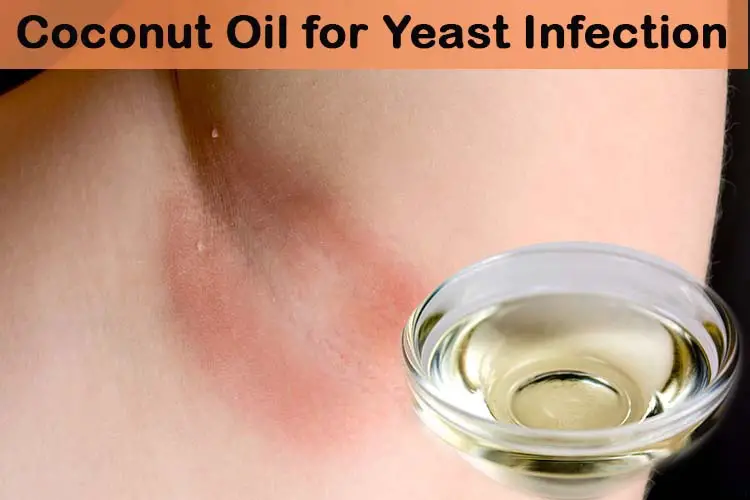Root
Grandma Roody
- Joined
- Dec 2, 2012
- Messages
- 1,836
- Reputation
- 0
- Reaction score
- 3,498
- Points
- 0
- Website
- everessencekd.com
- Currently Smoking
- My Genius Pipe!
10 Signs You Have Candida Overgrowth & What To Do About It
BY DR. AMY MYERS
APRIL 4, 2013 5:15 AM EDT
 You might be wondering, What on earth is candida? Candida is a fungus, which is a form of yeast, and a very small amount of it lives in your mouth and intestines. Its job is to aid with digestion and nutrient absorption but, when overproduced, candida breaks down the wall of the intestine and penetrates the bloodstream, releasing toxic byproducts into your body and causing leaky gut. This can lead to many different health problems, ranging from digestive issues to depression.
You might be wondering, What on earth is candida? Candida is a fungus, which is a form of yeast, and a very small amount of it lives in your mouth and intestines. Its job is to aid with digestion and nutrient absorption but, when overproduced, candida breaks down the wall of the intestine and penetrates the bloodstream, releasing toxic byproducts into your body and causing leaky gut. This can lead to many different health problems, ranging from digestive issues to depression.
How do you get candida overgrowth?
The healthy bacteria in your gut typically keep your candida levels in check. However, several factors can cause the candida population to get out of hand:
Here are 10 common candida symptoms
How do you test for Candida overgrowth?
Blood test
You'll want to check your levels for IgG, IgA, and IgM candida anti-bodies. These can be checked through most any lab. High levels indicate an overgrowth of candida. I find in my clinic that these can often be negative even when the stool or urine test is positive.
Stool testing
I find this to be the most accurate test available. This will check for candida in your colon or lower intestines. The lab can usually determine the species of yeast as well as which treatment will be affective. (Note: be sure that your doctor orders a comprehensive stool test rather than the standard stool test.)
Urine Organix Dysbiosis Test
This test detects a waste product of Candida yeast overgrowth known as D-Arabinitol. An elevated test means an overgrowth of candida. This test will determine if there is candida in your upper gut or small intestines.
How do you treat candida overgrowth?
Effectively treating candida involves stopping the yeast overgrowth, restoring the friendly bacteria that usually keep them in check, and healing your gut so that candida can no longer enter your bloodstream.
Getting rid of the candida overgrowth primarily requires a change in diet to a low carbohydrate diet. Sugar is what feeds yeast, so eliminating sugar in all of its simple forms like candy, desserts, alcohol and flours.
And reducing to only one cup a day of the more complex carbohydrates such as grains, beans, fruit, bread, pasta, and potatoes will prevent the Candida from growing and eventually cause it to die. I would recommend eliminating all fermented foods as well.
Using diet alone could take three to six months before the candida is back under control. Because of this I use an anti fungal medication such as Diflucan or Nyastatin for a month or longer with my patients. If you are self-treating you can take a supplement of caprylic acid. Caprylic Acid comes from coconut oil and basically "pokes holes" in the yeast cell wall, causing it to die.
You may read that some people recommend herbs such as oil of oregano. Oil of oregano can be very effective, but it can also kill good bacteria so I don't recommend it. The anti-fungal medications and caprylic acid are very specific to yeast and will not harm your good bacteria.
It's a must to restore the healthy bacteria that typically keep your candida population under control, you should takeprobiotics on a regular basis. Taking anywhere from 25 to 100 billion units of probiotics should help to reduce the Candida levels and restore your levels of good bacteria. Finally, healing your gut by eliminating inflammatory foods that can harm your GI tract and introducing foods that aid in digestion and nutrient absorption, will prevent candida from working its way through your body, and will dramatically improve your overall health.
If you would like to find out for sure if you have candida overgrowth, consider seeing a functional medicine doctor who is trained in detecting and treating candida.
Photo Credit: Shutterstock.com
BY DR. AMY MYERS
APRIL 4, 2013 5:15 AM EDT

How do you get candida overgrowth?
The healthy bacteria in your gut typically keep your candida levels in check. However, several factors can cause the candida population to get out of hand:
- Eating a diet high in refined carbohydrates and sugar (which feed the yeast)
- Consuming a lot of alcohol
- Taking oral contraceptives
- Eating a diet high in beneficial fermented foods like Kombucha, sauerkraut and pickles
- Living a high-stress lifestyle
- Taking a round of antibiotics that killed too many of those friendly bacteria
Here are 10 common candida symptoms
- Skin and nail fungal infections (such as athlete’s foot or toenail fungus)
- Feeling tired and worn down or suffering from chronic fatigue or fibromyalgia
- Digestive issues such as bloating, constipation, or diarrhea
- Autoimmune disease such as Hashimoto’s thyroiditis, Rheumatoid arthritis, Ulcerative colitis, Lupus, Psoriasis, Scleroderma or Multiple sclerosis
- Difficulty concentrating, poor memory, lack of focus, ADD, ADHD and brain fog
- Skin issues such as eczema, psoriasis, hives, and rashes
- Irritability, mood swings, anxiety, or depression
- Vaginal infections , urinary tract infections, rectal itching or vaginal itching
- Severe seasonal allergies or itchy ears
- Strong sugar and refined carbohydrate cravings
How do you test for Candida overgrowth?
Blood test
You'll want to check your levels for IgG, IgA, and IgM candida anti-bodies. These can be checked through most any lab. High levels indicate an overgrowth of candida. I find in my clinic that these can often be negative even when the stool or urine test is positive.
Stool testing
I find this to be the most accurate test available. This will check for candida in your colon or lower intestines. The lab can usually determine the species of yeast as well as which treatment will be affective. (Note: be sure that your doctor orders a comprehensive stool test rather than the standard stool test.)
Urine Organix Dysbiosis Test
This test detects a waste product of Candida yeast overgrowth known as D-Arabinitol. An elevated test means an overgrowth of candida. This test will determine if there is candida in your upper gut or small intestines.
How do you treat candida overgrowth?
Effectively treating candida involves stopping the yeast overgrowth, restoring the friendly bacteria that usually keep them in check, and healing your gut so that candida can no longer enter your bloodstream.
Getting rid of the candida overgrowth primarily requires a change in diet to a low carbohydrate diet. Sugar is what feeds yeast, so eliminating sugar in all of its simple forms like candy, desserts, alcohol and flours.
And reducing to only one cup a day of the more complex carbohydrates such as grains, beans, fruit, bread, pasta, and potatoes will prevent the Candida from growing and eventually cause it to die. I would recommend eliminating all fermented foods as well.
Using diet alone could take three to six months before the candida is back under control. Because of this I use an anti fungal medication such as Diflucan or Nyastatin for a month or longer with my patients. If you are self-treating you can take a supplement of caprylic acid. Caprylic Acid comes from coconut oil and basically "pokes holes" in the yeast cell wall, causing it to die.
You may read that some people recommend herbs such as oil of oregano. Oil of oregano can be very effective, but it can also kill good bacteria so I don't recommend it. The anti-fungal medications and caprylic acid are very specific to yeast and will not harm your good bacteria.
It's a must to restore the healthy bacteria that typically keep your candida population under control, you should takeprobiotics on a regular basis. Taking anywhere from 25 to 100 billion units of probiotics should help to reduce the Candida levels and restore your levels of good bacteria. Finally, healing your gut by eliminating inflammatory foods that can harm your GI tract and introducing foods that aid in digestion and nutrient absorption, will prevent candida from working its way through your body, and will dramatically improve your overall health.
If you would like to find out for sure if you have candida overgrowth, consider seeing a functional medicine doctor who is trained in detecting and treating candida.
Photo Credit: Shutterstock.com















